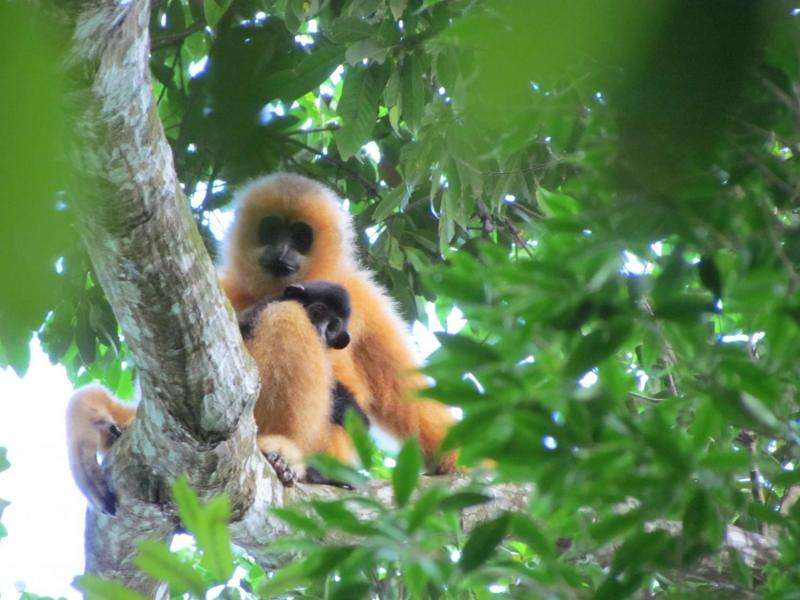New action plan to save world's rarest primate

An international team of more than 100 scientists, policy makers and community representatives, led by international conservation charity the Zoological Society of London (ZSL), today published a new report outlining the vital steps needed to save the Hainan gibbon (Nomascus hainanus) from extinction. With only 25 individuals remaining in less than 20 square kilometres of forest in China's Hainan Island, the Critically Endangered Hainan gibbon is one of the rarest animals in the world.
The last surviving Hainan gibbon population contains only three social groups, in which male and female gibbons still sing duets with each other at dawn. This species faces a high risk of extinction due to its isolation and tiny population size - it could potentially become the first ape species to be wiped out by human activity. Experts hope the comprehensive report will galvanise and encourage authorities and communities to take immediate and effective action.
Dr Samuel Turvey, Senior Research Fellow at ZSL, who co-chaired the major international conservation planning meeting in Hainan that produced the report, said: "Ensuring a future for the Hainan gibbon is one of the most important global priorities in mammal conservation. If the right steps are carried out now, it's not too late to save this incredible species. I hope that the Hainan gibbon will be used in the future as an example of a conservation success story."
The report identified over 40 key actions needed to boost gibbon numbers and ensure their long-term survival, including enhancing monitoring systems to keep track of remaining individuals, creating canopy bridges between forest fragments to expand their habitat range, and limiting disturbance by people in forested areas.
Professor Long Yongcheng, head of the IUCN's China Primate Specialist Group, said: "The Hainan gibbon is an indicator of good forest health and ecological stability, and so protecting the species also helps to conserve Hainan's environment and its international green image."
There were more than 2,000 Hainan gibbons in the 1950s. During the late 20th century their numbers were devastated by hunting and the loss of their forest habitat for logging and rubber plantations. Only about 30 gibbons remained in the 1980s. While both the gibbons and their habitat are now protected under Chinese law, they are still potentially threatened by human disturbance, and by a lack of connected forest habitat to allow expansion of their population. A typhoon or disease outbreak also has the potential to wipe out the entire tiny population.
More information: International Conservation Planning Workshop for the Hainan Gibbon Report available to download from www.zsl.org/science/research/h … -gibbon-conservation
Provided by Zoological Society of London



















